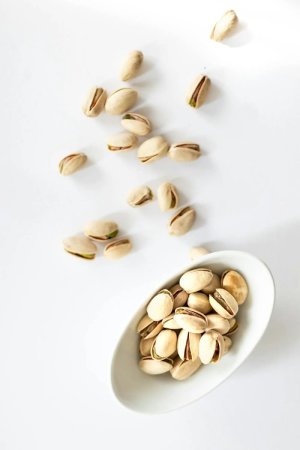6 foods dietitians say can boost your health after 60
By
Veronica E.
- Replies 0
Disclaimer: The information provided in this article is for educational purposes only and is not intended as a substitute for professional medical advice, diagnosis, or treatment. Always consult your physician or other qualified healthcare providers with any questions you may have regarding a medical condition or before making any changes to your health regimen.
Turning 60 is something to celebrate—wisdom, freedom, and maybe a well-deserved slice of cake (made with whole grains, of course).
But as this new chapter begins, the body may start needing a bit more care and attention.
The great news? The right foods can play a huge role in helping you stay active, sharp, and feeling your best.
At The GrayVine, we believe healthy aging isn’t about bland meals or strict diets.
It’s about enjoying delicious, nutrient-rich foods that support your bones, brain, heart, and more.
According to leading dietitians, these six foods may be small in size, but they can have a big impact on your health.

1. Walnuts: a heart-healthy snack for sharp minds
Walnuts are rich in plant-based omega-3s, polyphenols, and antioxidants that promote both brain and heart health.
In fact, studies like the Nurses’ Health Study have shown that women who regularly ate walnuts in their late 50s and early 60s were more likely to enjoy healthy aging—free from chronic diseases and memory problems.
To enjoy the benefits, try adding a handful to your morning oatmeal, mixing them into yogurt, or even blending them into homemade snack bars.
Just two servings a week can go a long way.
Also read: Are you missing out on America’s cheapest fast-food chain?
2. Legumes: your pantry’s best-kept secret
Beans, lentils, chickpeas, and even peanuts are loaded with plant-based protein, fiber, and nutrients that help preserve bone density and muscle mass.
They’re especially helpful for post-menopausal women, thanks to natural compounds that help reduce inflammation and support bone health.
Try tossing some lentils into soups, making a chickpea salad, or adding black beans to tacos.
Not only are legumes nutritious—they’re budget-friendly and filling, too.
3. Pistachios: tiny nuts with big benefits
These colorful little nuts are more than just a snack—they’re packed with protein, fiber, and antioxidants like lutein that support eye health.
A recent study even found that eating two ounces of pistachios daily helped reduce oxidative stress and improved markers of metabolic health.
They’re also waistline-friendly, helping you feel full without packing on calories.
Eat them by the handful, or sprinkle over salads, yogurt, or roasted vegetables.

4. Leafy greens: brain-boosting nutrition
Spinach, kale, collard greens, and other leafy vegetables are rich in vitamin K, folate, and beta-carotene—nutrients tied to better memory and slower cognitive decline in older adults.
If you’re on blood thinners, be sure to speak with your doctor before making major changes, but in most cases, consistent intake is fine.
Steam them, sauté them, or add to smoothies for a soft, easy-to-digest way to get your greens!
Also read: Discover the "dinosaur time" trend that's helping people eat more greens
5. Cranberries: small berries, strong protection
Cranberries contain antioxidants like anthocyanins that promote brain health and help prevent urinary tract infections—a common concern for women over 65.
These compounds help prevent bacteria from sticking to the bladder wall, lowering the chance of infection.
Enjoy dried cranberries (go for low-sugar varieties), or add fresh ones to oatmeal, trail mix, or smoothies.
They add a tart, refreshing punch that’s good for you, too!
6. Prunes: support for bones and digestion
Prunes—also known as dried plums—are well known for their digestive benefits, but they’re also powerful bone protectors.
One study found that eating just 5–6 prunes daily helped preserve hip bone density in postmenopausal women.
They’re easy to enjoy: toss into a salad, blend into a smoothie, or enjoy as a sweet afternoon treat.
Just make sure to drink plenty of water to help fiber work its magic!
Also read: The unexpected superfood: Which greens pack the most nutrients?
Beyond food: other healthy aging tips
While food plays a huge role in how you feel, it’s not the only factor. Here are a few additional habits that help support healthy aging:
Ready to get cooking? Try these recipes
Here’s to living well at every age—with meals that nourish your body, spark joy, and support a vibrant life.
Because with the right foods (and a little fun along the way), healthy aging can be both delicious and empowering!
Read next: Can you eat plums daily? The good and the bad that you need to know.

Have you tried adding any of these foods to your routine? Got a favorite recipe, or questions about nutrition after 60? Share your tips and experiences in the comments below—your wisdom just might help someone else thrive in their golden years.
Turning 60 is something to celebrate—wisdom, freedom, and maybe a well-deserved slice of cake (made with whole grains, of course).
But as this new chapter begins, the body may start needing a bit more care and attention.
The great news? The right foods can play a huge role in helping you stay active, sharp, and feeling your best.
At The GrayVine, we believe healthy aging isn’t about bland meals or strict diets.
It’s about enjoying delicious, nutrient-rich foods that support your bones, brain, heart, and more.
According to leading dietitians, these six foods may be small in size, but they can have a big impact on your health.

Adding the right nutrient-rich foods to your plate can help support a healthier, more vibrant life after 60. Image Source: Pexels / Mikhail Nilov.
1. Walnuts: a heart-healthy snack for sharp minds
Walnuts are rich in plant-based omega-3s, polyphenols, and antioxidants that promote both brain and heart health.
In fact, studies like the Nurses’ Health Study have shown that women who regularly ate walnuts in their late 50s and early 60s were more likely to enjoy healthy aging—free from chronic diseases and memory problems.
To enjoy the benefits, try adding a handful to your morning oatmeal, mixing them into yogurt, or even blending them into homemade snack bars.
Just two servings a week can go a long way.
2. Legumes: your pantry’s best-kept secret
Beans, lentils, chickpeas, and even peanuts are loaded with plant-based protein, fiber, and nutrients that help preserve bone density and muscle mass.
They’re especially helpful for post-menopausal women, thanks to natural compounds that help reduce inflammation and support bone health.
Try tossing some lentils into soups, making a chickpea salad, or adding black beans to tacos.
Not only are legumes nutritious—they’re budget-friendly and filling, too.
Also read: Fresh food shouldn’t be a luxury: How one program is helping seniors eat healthier3. Pistachios: tiny nuts with big benefits
These colorful little nuts are more than just a snack—they’re packed with protein, fiber, and antioxidants like lutein that support eye health.
A recent study even found that eating two ounces of pistachios daily helped reduce oxidative stress and improved markers of metabolic health.
They’re also waistline-friendly, helping you feel full without packing on calories.
Eat them by the handful, or sprinkle over salads, yogurt, or roasted vegetables.

Pistachios are a heart-healthy, nutrient-packed snack that supports eye health and keeps you feeling full. Image Source: Pexels / paul wence.
4. Leafy greens: brain-boosting nutrition
Spinach, kale, collard greens, and other leafy vegetables are rich in vitamin K, folate, and beta-carotene—nutrients tied to better memory and slower cognitive decline in older adults.
If you’re on blood thinners, be sure to speak with your doctor before making major changes, but in most cases, consistent intake is fine.
Steam them, sauté them, or add to smoothies for a soft, easy-to-digest way to get your greens!
Also read: Discover the "dinosaur time" trend that's helping people eat more greens
5. Cranberries: small berries, strong protection
Cranberries contain antioxidants like anthocyanins that promote brain health and help prevent urinary tract infections—a common concern for women over 65.
These compounds help prevent bacteria from sticking to the bladder wall, lowering the chance of infection.
Enjoy dried cranberries (go for low-sugar varieties), or add fresh ones to oatmeal, trail mix, or smoothies.
They add a tart, refreshing punch that’s good for you, too!
6. Prunes: support for bones and digestion
Prunes—also known as dried plums—are well known for their digestive benefits, but they’re also powerful bone protectors.
One study found that eating just 5–6 prunes daily helped preserve hip bone density in postmenopausal women.
They’re easy to enjoy: toss into a salad, blend into a smoothie, or enjoy as a sweet afternoon treat.
Just make sure to drink plenty of water to help fiber work its magic!
Also read: The unexpected superfood: Which greens pack the most nutrients?
Beyond food: other healthy aging tips
While food plays a huge role in how you feel, it’s not the only factor. Here are a few additional habits that help support healthy aging:
- Stick to a sleep schedule. Getting consistent rest can reduce your overall risk of death by nearly 50%. Try to sleep and wake up at the same time each day.
- Keep moving. Daily activity like walking, gardening, or yoga helps with balance, mobility, and mood.
- Stay connected. Social interaction is vital. Join a local group, chat with friends, or try a new hobby to stay mentally and emotionally healthy.
- Engage your brain. Crossword puzzles, word games, or learning a new skill can help your mind stay sharp and active.
Ready to get cooking? Try these recipes
Here’s to living well at every age—with meals that nourish your body, spark joy, and support a vibrant life.
Because with the right foods (and a little fun along the way), healthy aging can be both delicious and empowering!
Read next: Can you eat plums daily? The good and the bad that you need to know.
Key Takeaways
- Dietitians recommend incorporating walnuts, legumes, pistachios, leafy greens, cranberries, and prunes into your diet to support brain, heart, bone, and digestive health after 60.
- Walnuts and pistachios provide healthy fats, antioxidants, and protein; legumes like chickpeas support muscle and bone strength; and leafy greens boost memory and slow cognitive decline.
- Cranberries help prevent urinary tract infections, while prunes support both bone density and healthy digestion.
- Other important aging tips include getting regular sleep, staying active, maintaining social connections, and engaging your brain daily.
Have you tried adding any of these foods to your routine? Got a favorite recipe, or questions about nutrition after 60? Share your tips and experiences in the comments below—your wisdom just might help someone else thrive in their golden years.






